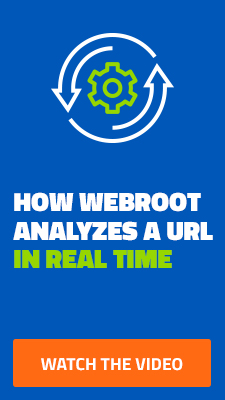
by Blog Staff | Jul 20, 2012 | Threat Lab
Cybercriminals are currently spamvertising millions of emails impersonating Intuit, in an attempt to trick end and corporate users into clicking on the malicious links found in the emails.
The emails pretend to be coming from Intuit’s PaymentNetwork and acknowledge the arrival of an incoming payment. In reality though, they redirect users to a Black Hole exploit kit landing URLs where client-side exploits are served, and ultimately malware is dropped on the infected hosts.
More details:
(more…)

by Blog Staff | Jul 19, 2012 | Threat Lab
On their way to occupy an even bigger market share, spammers constantly look for new ways to increase visitor conversion, and target as many users as possible with the least amount of time and money invested.
For years, their tactics included the development of cybercrime friendly online communities, sophisticated harvesting and validation of emails and user names across popular Web services, abusing the Domain Keys Identified Mail (DKIM) trust established between the most popular providers of free Web based email, development of DIY image spam generating platforms, conversion of malware-infected hosts into spam spewing zombies, and most importantly, efficient ways to bypass anti-spam filters put in place by the security industry.
In this post, I’ll profile a recently advertised Ask.fm spamming tool, capable of spamming thousands of users through the use of proxies, which are in fact malware-infected hosts converted to anonymization proxies.
More details:
(more…)

by Grayson Milbourne | Jul 19, 2012 | Threat Lab
If there is one thing that can be observed about the AV industry, it is that no solution is ever 100% effective at blocking malware. With this in mind, Webroot SecureAnywhere (WSA) was designed to protect users even in cases where undetected malicious software has made it onto the system.
AV-Comparatives recently published results for June’s “Real World” Protection Test. This test aims to replicate a real world experience for how malware would infect a PC. The scores indicate how many threats were detected vs. missed.
(more…)

by Blog Staff | Jul 18, 2012 | Threat Lab
In an attempt to aggregate as much traffic as possible, cybercriminals systematically abuse popular brands and online services. Next to periodically rotating the brands, they also produce professional looking email templates, in an attempt to successfully brand-jack these companies, and trick their customers into interacting with the malicious emails.
Today’s highlight is on a currently spamvertised client-side exploits and malware serving campaign impersonating UPS (United Parcel Service). Once users click on the links found in the malicious email, they’re automatically redirected to a Black Hole exploit kit landing page serving client-side exploits, and ultimately dropping malware on the exploited hosts.
More details:
(more…)

by Blog Staff | Jul 17, 2012 | Threat Lab
On daily basis, hundreds of thousands of legitimate accounts across multiple social networks get compromised, to be later on abused as a platform for launching related cyber attacks and social engineering attempts.
Recently, I came across a new Russian service offering access to compromised accounts across multiple social networks such as Vkontakte, Twitter, Facebook, LiveJournal, and last but not least, compromised email accounts. What’s particularly interesting about this service is the fact that it’s exclusively targeting Russian and Ukrainian users.
More details:
(more…)

by Blog Staff | Jul 16, 2012 | Threat Lab
Lonely birds, beware!
Russian online dating scammers are currently spamvertising a fraudulent campaign attempting to socially engineer users into interacting with a bogus online dating service.
What’s so special about this scam? Just how vibrant is the Russian online dating fraud market segment? How can you avoid falling victim into their fraudulent schemes?
More details:
(more…)

by Blog Staff | Jul 13, 2012 | Threat Lab
American Airlines customers, watch where you click! Cybercriminals are currently spamvertising millions of emails impersonating the company in an attempt to trick end and corporate users into clicking on the malicious links found in the spamvertised email.
Upon execution, the campaign redirects users to a Black Hole exploit kit landing URL, where client-side exploits are served against outdated third-party software and browser plugins.
More details:
(more…)

by Blog Staff | Jul 10, 2012 | Threat Lab
Imagine you’re a cybercriminal that has somehow managed to infect a 1000 U.S based hosts and is looking for ways to monetize his malicious activity? He could easily start spreading spam or phishing emails, use the infected hosts as a platform for disseminating related malware attacks, or basically data mine the infected hosts for accounting data to be later on sold to fellow cybercriminals.
What if all he wanted to do is earn as much profit in the shortest possible amount of time without investing more efforts into the monetization of the infected hosts? Is the cybercrime ecosystem mature enough to offer him an alternative? Appreciate the rhetoric. The maturing cybercrime ecosystem is fully capable of offering him a high liquidity monetization approach for earning revenue by infecting hosts and spreading a specific undetectable executable pushed by the pay-per-install affiliate network that I’ll profile in this post.
More details:
(more…)

by Blog Staff | Jul 9, 2012 | Threat Lab
Cybercriminals are masters of multi-tasking. For instance, whenever a web server gets compromised, they will not only use its clean IP reputation to host phishing, spam and malware samples on it, they will also sell access to the shell allowing other cybercriminals the opportunity to engage in related malicious activities such as, mass scanning of remotely exploitable web application vulnerabilities.
Today, I intercepted a currently active phishing campaign that’s a good example of a popular tactic used by cybercriminal known as ‘campaign optimization’. The reason this campaign is well optimized it due to the fact that as it simultaneously targets Gmail, Yahoo, AOL and Windows Hotmail email users.
More details:
(more…)

by Blog Staff | Jul 6, 2012 | Threat Lab
In 2012 it’s becoming increasingly common for cybercriminals to apply basic quality assurance (QA) tactics to their campaigns. Next to QA, they also emphasize on campaign optimization strategies allowing them to harness the full potential of the malicious campaign.
Recently, I came across to an underground forum advertisement selling access to 117,000 unique U.S visitors — stats gathered over a period of 8 hours — for the purpose of redirecting them to a Black Hole web malware exploitation kit landing URL. The traffic aggregation taking place through black hat SEO (search engine optimization), is aiming to exploit a group of users known to have high purchasing power, namely, American citizens.
Are such underground market propositions offering traffic exchange deals gaining popularity, or are they just a fad? What’s the infection rate for 117,000 U.S based users redirected to a BlackHole exploits serving landing URL? Let’s find out.
More details:
(more…)








